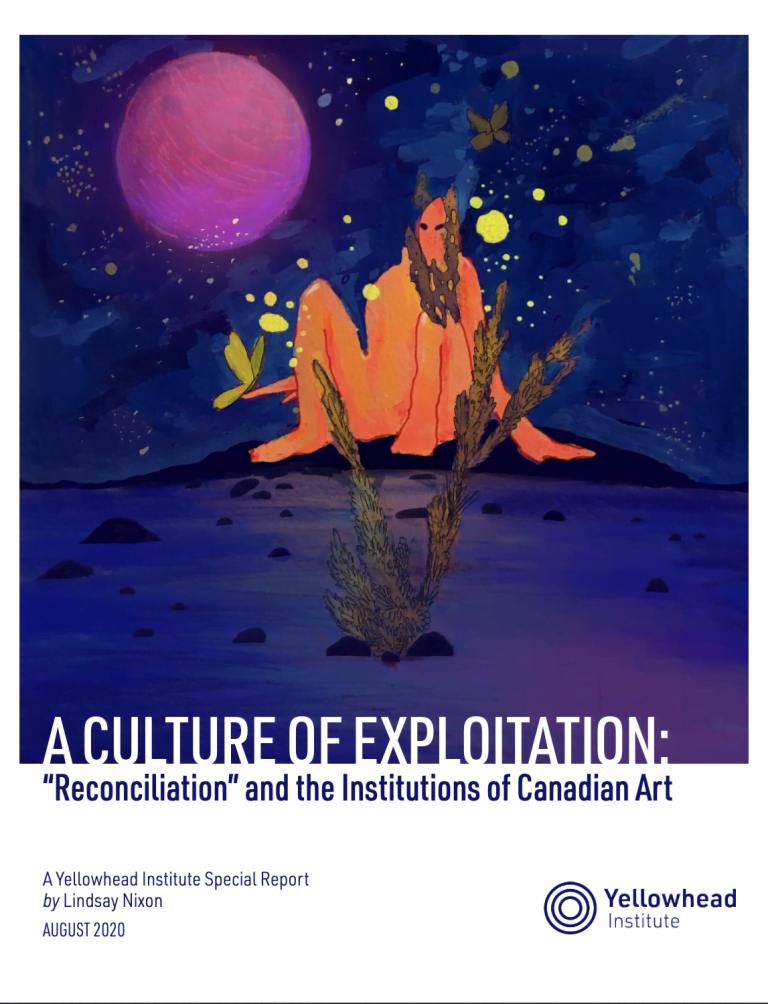Search the Baseline Project
To search the recommendations database, please visit the database main page.
To search the recommendations database, please visit the database main page.

Yellowhead Institute published the special report “A Culture of Exploitation: ‘Reconciliation’ and the Institutions of Canadian Art” in August 2020. The report addresses the contentious relationship between Canadian cultural institutions (art galleries, museums, funding agencies, collections, etc.) and Indigenous Peoples, which has been beset by tokenism and inequality. The report lays out standards of achievement for the relationship between Indigenous Peoples and cultural institutions in Canada and recommends repatriation of bodies of Indigenous ancestors, increased transparency, growth of Black and Indigenous cultural workers into senior positions and greater accessibility of cultural supports.